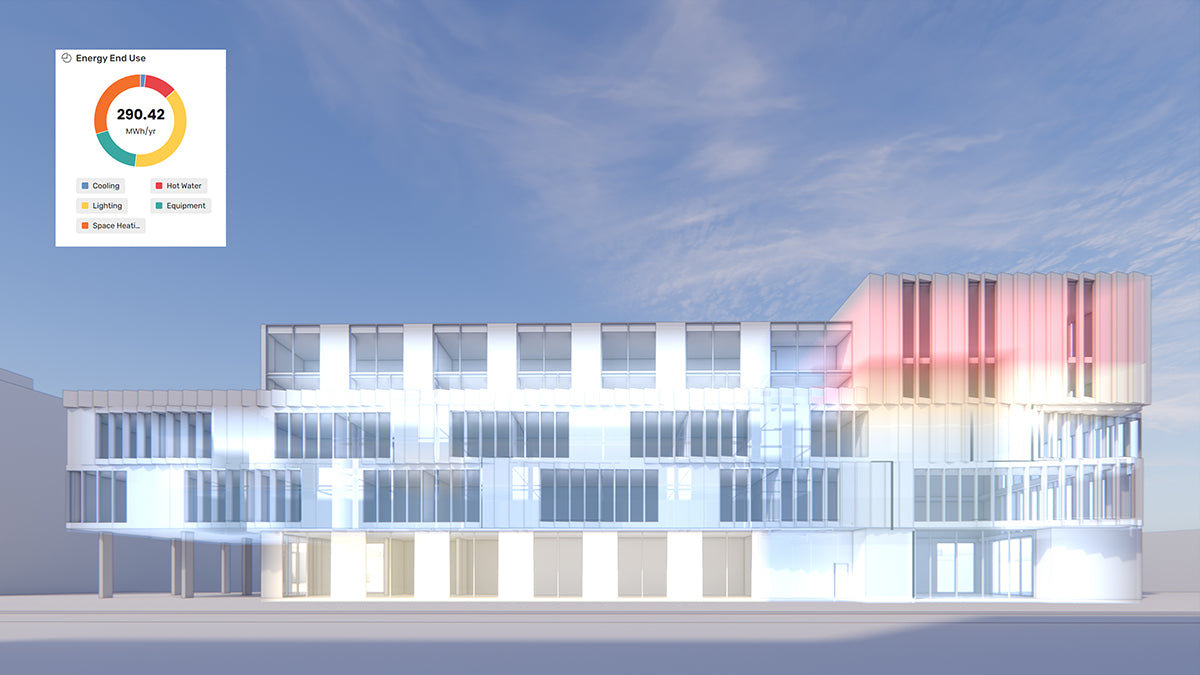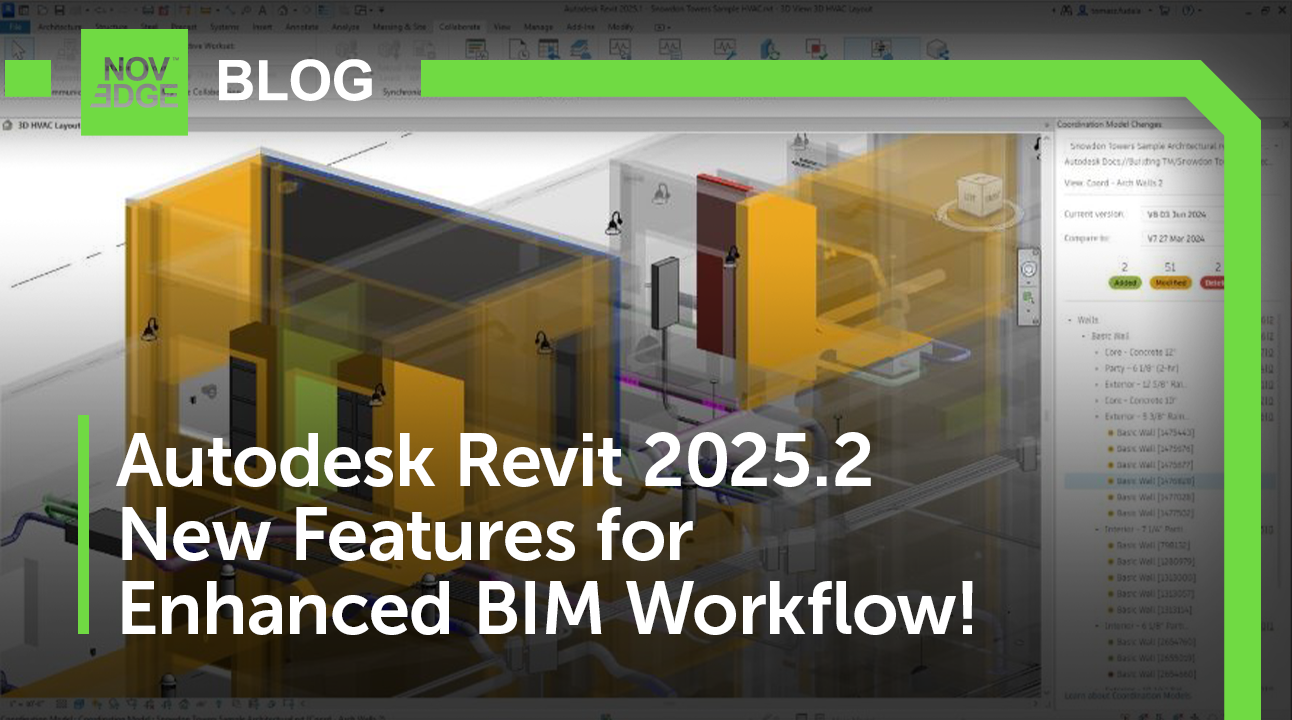Your Cart is Empty
Customer Testimonials
-
"Great customer service. The folks at Novedge were super helpful in navigating a somewhat complicated order including software upgrades and serial numbers in various stages of inactivity. They were friendly and helpful throughout the process.."
Ruben Ruckmark
"Quick & very helpful. We have been using Novedge for years and are very happy with their quick service when we need to make a purchase and excellent support resolving any issues."
Will Woodson
"Scott is the best. He reminds me about subscriptions dates, guides me in the correct direction for updates. He always responds promptly to me. He is literally the reason I continue to work with Novedge and will do so in the future."
Edward Mchugh
"Calvin Lok is “the man”. After my purchase of Sketchup 2021, he called me and provided step-by-step instructions to ease me through difficulties I was having with the setup of my new software."
Mike Borzage
An Interview with Greg Milliken, CEO of Alibre
April 18, 2007 7 min read

Greg Milliken is the CEO of Alibre. Greg is one of a kind — he has an impressive track record of success as an entrepreneur and executive in the CAD and 3D world. Greg can look at ideas with an open-minded curiosity, never taking anything for granted. He is a very busy guy — it took me several weeks and countless e-mails to get this interview. Now it is my great pleasure to share with you what I found out about Greg, his company, and his vision for the CAD industry. Here is the interview.
Greg, can you tell us a bit about yourself and your company?
Sure. I have been in the CAD industry for over 20 years now, having started at Intergraph in Huntsville, Alabama right out of college with my ME degree from the University of Texas at Austin. Hook ‘em Horns. As an aside, I especially liked this celebration by the USC cheerleader of UT’s national championship win over USC in 2005. I then went on to work at Tektronix, Autodesk, AccelGraphics which I co-founded and went public in 1997, Knowledge Revolution which was acquired by MSC in 1998, and then to Alibre.
Alibre is all about making 3D accessible to anyone
Alibre is all about making 3D accessible to anyone. A key part of that is breaking down barriers to access that have been a key reason why a small number of software vendors maintain almost tyrannical control over the market. Our goal is to be the easiest company to do business with in the market. We make our products easy to use, easy to get – just search us out on the web and download a trial, or start with our totally free version Alibre Design Xpress — easy to buy, easy to get support, easy to return if you don’t feel the product suits your application, and on and on.
We extensively leverage the Internet to drive efficiency and value in our business. We really pioneered the use of internet search advertising in the CAD market, and today still do it better than anyone else. We sell, deploy and support our product over the Internet to create a very profitable business while selling our product at a fraction of the price of traditional 3D CAD products. Even our core product Alibre Design is the only native peer-to-peer CAD application. So in addition to providing standalone 3D parametric design, like other traditional CAD products, with an Internet connection Alibre Design becomes a live collaboration tool allowing users to securely share data and conduct real-time team design sessions with others using Alibre Design anywhere in the world.
Alibre is perceived by many as a product that has 80% of SolidWorks features at a fraction of the price. Are you happy with this definition?
Yes, we think it is an accurate description. It is really the third time this has happened in CAD industry, with Autodesk doing it to Computervision and others in the 1980s and SolidWorks doing it to PTC in the 1990s, and we’re doing it to them in the 2000s. I imagine you can find this vendor or that who will jump up and down and say they have X or Y more features than Alibre Design, and it really doesn’t matter. We let the competition haggle about this feature or that. The fact is that with any 3D CAD system, the vast majority of people using it are doing things in these systems that can be fully done in Alibre Design. Not everyone has to design the full car, or the complex surfaces for a turbine blade.
software vendors can add features far faster than most people can learn them
The reality is that software vendors can add features far faster than most people can learn them so the majority of new features vendors use to pump up their releases go unused. I mean, how much of Microsoft Word or Excel do you use? Granted all software vendors are guilty of this somewhat, even Alibre. It’s always a hard decision to focus on core things that don’t carry as exciting a message, we just try to do less of it.
Our strategy in this regard is clearly laid out in the “Innovator’s Solution” by Clayton Christensen. The strategy is simply stated as follows, and I am paraphrasing:
Disruptive innovators don’t try to bring better products to established customers in existing markets. They introduce products/services that are “not as good” as currently available products, but they offer other benefits appealing to new or less-demanding customers; benefits such as being easier to use, more convenient, less expensive and so on. Once a foothold is established in new or low-end markets, the improvement cycle starts, and since the pace of technology advancement outstrips customers’ ability to use it, the previously “not-good-enough” technology improves to meet the needs of more demanding customers.
This sounds a lot like Alibre to me. This trend works in the favor of a new entrant who entered the market with less functionality, but conversely works against the entrenched vendor who supposed was “good enough” years ago. So now they just spend more and more of their resources on things that benefit fewer and fewer of their customers, and at the same time unfortunately make the product harder to learn and use for everyone.
Your company is selling a "pure 3D" design software. What about 2D? Will it become just a byproduct of 3D?
Well, while we don’t offer a straight 2D drafting system like AutoCAD, a key component of our system is the ability to generate 2D detailed drawings from the 3D model, so 2D is a core aspect of our system; as you say, though, in this scenario 2D is a byproduct of 3D.
We actually don’t see 2D going away any time soon, and believe that 3D is just another tool in the toolbox. Sometimes you use 3D, sometimes you use 2D. In fact, we go out of the way to help our customers “adopt 3D” versus “transitioning to 3D.” Transitioning to 3D implies that one is changing their whole business process to use 3D and this is just too big a hurdle for a huge number of potential 3D users. Moreover, if you throw down $5,000+ for a license of a 3D CAD system, not to mention $25,000 or $30,000 for five licenses, etc., you better start “transitioning” to 3D pretty fast. We see it a bit different, let people get into it at their own pace at a commitment level (price, training, etc.) that lets them pick it up at their own pace. Use 3D on this particular project or that one, or use it just to accept a model from a partner. Start using 3D just to begin learning the skill. Start with our free version Alibre Design Xpress and never move to a paid version if you want. Use it for a woodworking project at home like these. Note that all these Popular Mechanics projects were modeled in Alibre Design. Just start, there is no reason to put it off any longer.
I always say that almost all 3D CAD systems are "good enough" for the average user. Why should someone choose Alibre over one of your competitors' products?
Well, I think anyone reading my answers above would conclude that I agree with you on that, the idea that almost all 3D CAD systems are “good enough.” Why should someone choose Alibre Design? We’re the best value on the market and you don’t have to be a CAD expert to learn and use our product productively. Plus you can start for free. We also won’t try strong-arm tactics on you like forced retirements. We respect out customers.
You are also a blogger. What's your opinion on the impact of the blog on you and on your company?
(Alibre blog) gives me a chance to say things in a way that I can’t in a press release
The impact of the blog has been great. It gives me a chance to say things in a way that I really can’t in a press release, and also express a bit of my real personality, although some may not like that. Usually those who don’t like it are those that I am hoping won’t like it. I was at COFES the other day and had someone from a competitor make some disparaging comments about something I had blogged about in the past. I realized that my message had hit home, and it brightened my day. 
I will say that I really respect bloggers who post all the time, I wonder what they do all day — I mean, if you are not a member of the press or a writer or something. I am a bit delinquent on my blog now but I have some posts coming in the next day or so. Granted I am a CEO and have a company to run so I knew it would be a challenge to keep up with. I typically wait until I have something to say that others might want to read, so that doesn’t necessarily lend itself to the sort of stream of consciousness you see in a lot of blogs.
Without revealing any secrets, how do you plan to stay competitive when your competitors have deep pockets, huge resources, and well established brands?
Just keep doing what we’re doing – it’s working. We’re building the next channel and doing it with permission marketing. We build a one-to-one relationship with the customer and our business is optimized for the web, sort of like the Dell of CAD. First there were top-down direct enterprise sales models such as those employed by UGS and Dassault, then there were VAR models like those from Autodesk and SolidWorks, and then there is Alibre. We’re the future, they’re the past. We won’t forget them though, they hold a special place in my heart — some more special than others.
Based on your experience, what role will Novedge and other online resellers play in the evolution of CAD/CAM markets?
Novedge is right there with us. I think you are building the sort of web presence that is a key part of the future we envision. I think your marketing is top notch and your site conveys quality. Not all online resellers will survive of course, but those who work at it and continually improve are part of a trend that is changing the CAD market for the better. Plus, I like your persistence, how long did you keep after me to do this interview? Businesses with these characteristics have what it takes to succeed.
I would like to thank Greg Milliken for taking the time to speak with me today. If you have any questions for Greg or for Novedge, please leave a comment below and we will be glad to answer.
Franco Folini
Also in NOVEDGE Blog

How the AEC Industry Shifted Towards Essential Sustainable Building Design
August 15, 2024 4 min read
Read More
Unlocking New Realms of Design with Enscape 4.1: Introducing Impact Add-on and Lot More
August 02, 2024 2 min read
Read More
Explore Autodesk Revit 2025.2: New Features and Enhancements for Enhanced BIM Workflows
July 30, 2024 3 min read
Read MoreSubscribe
Sign up to get the latest on sales, new releases and more …


